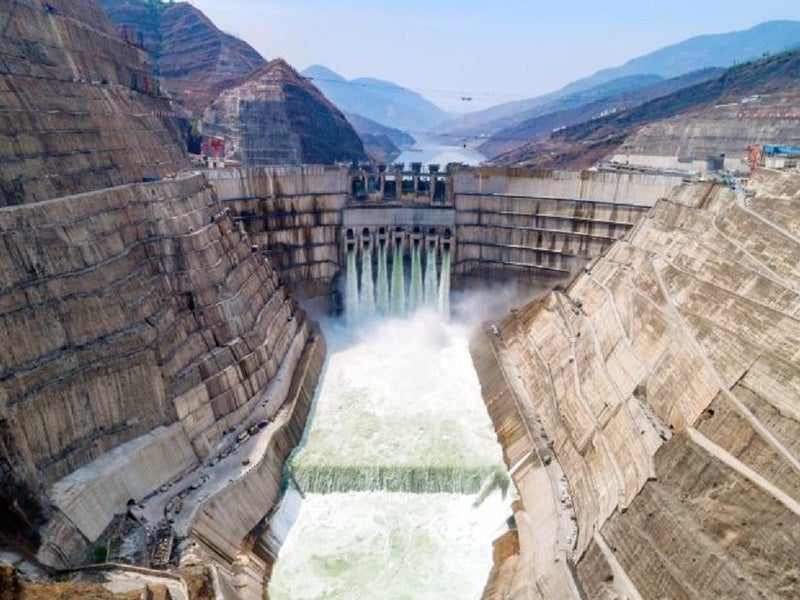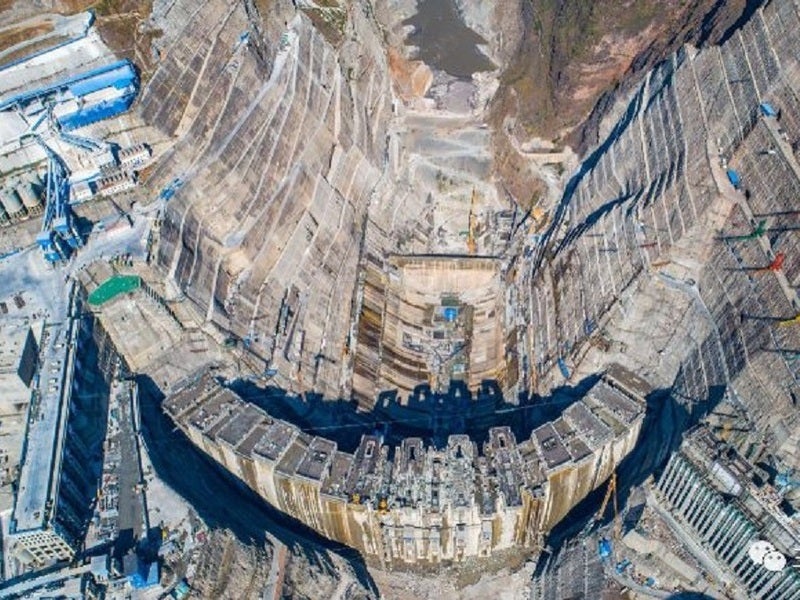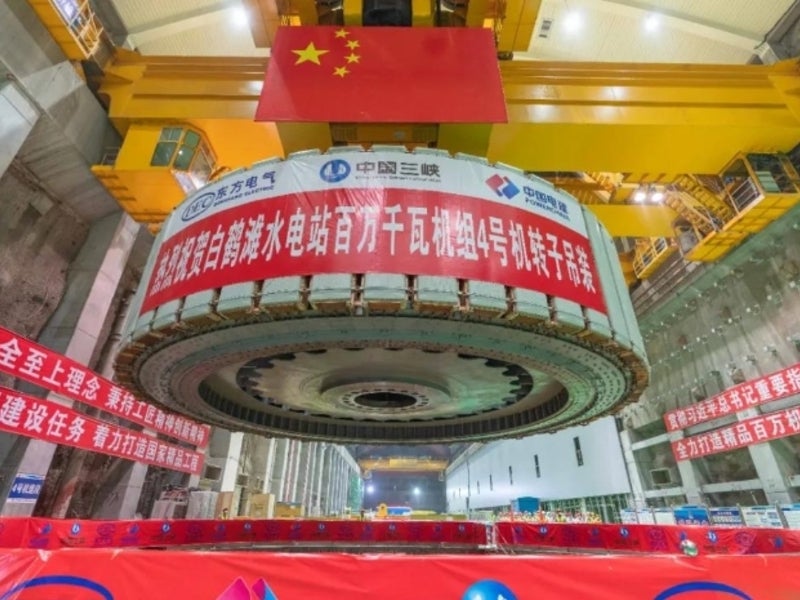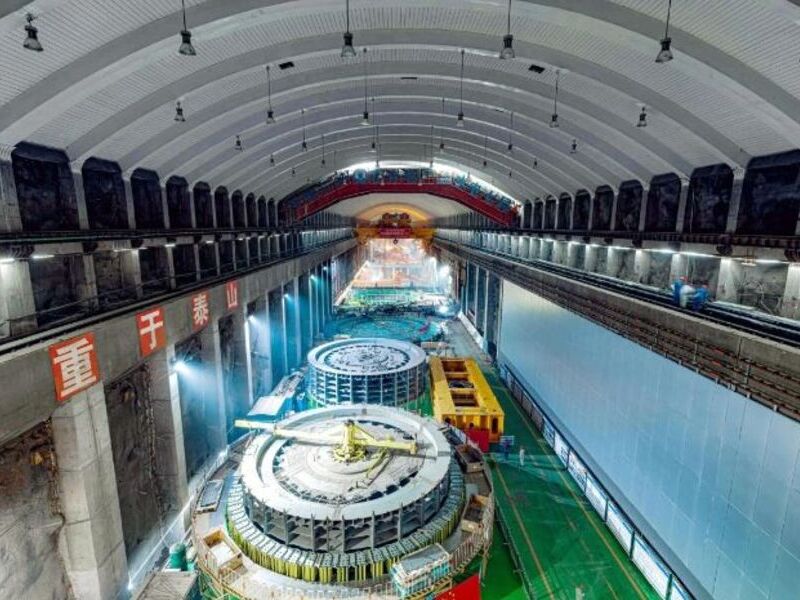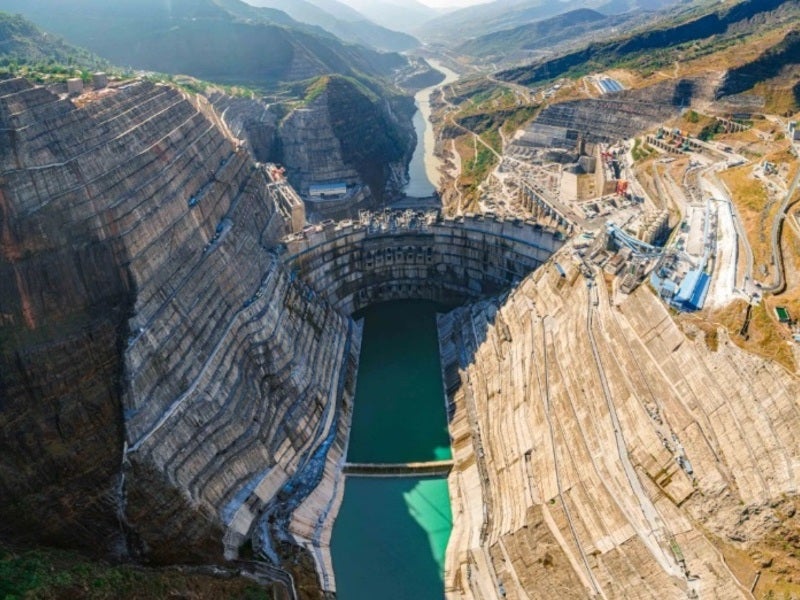The Baihetan hydropower project is a 16GW hydroelectric dam located on the Yangtze River in the provinces of Sichuan and Yunnan in southwest China.
Developed by China Three Gorges (CTG), the hydroelectric project can generate 16GW of energy through its 16 generating units. It is the second biggest hydroelectric project in the world, after the Three Gorges Dam in Hubei province, central China.
The Baihetan power project is being developed by Jinsha River Chuanyun Hydropower Development Company, a joint venture between CTG (15%), Sichuan Energy Investment Group (70%) and Yunnan Energy Investment Group (15%).
The CNY220bn ($34bn) Baihetan Hydropower Project commenced partial operations in April 2021 and began generating electricity through two turbines by June 2021. It is expected to be fully operational by July 2022. Once fully operational, the hydropower plant is projected to generate approximately 62 billion kilowatt hours (kWh) of clean energy annually and offset more than 51 million tonnes of carbon emissions a year.
In addition to power generation, the hydropower project will provide sand blocking, flood control and improved navigation.
Location of Baihetan hydropower project
The Baihetan hydropower project was built downstream of the Jinsha River, a tributary of the Yangtze River, in Ningnan county in the Sichuan province and Qiaojia county in the Yunnan province.
The site is located between the Wumeng Mountain and Lunan Mountain in the Hengduan Mountains, approximately 41km away from Qiaojia county. The upper part is approximately 182km away from the Wudongde dam site, while the lower part is 195km away from the Xiluodu dam site.
Baihetan hydropower project details
The Baihetan hydropower plant has a water storage capacity of 20.62 billion m³ and flood control reservoir capacity of 7.5 billion m³, which is the third-largest after the Three Gorges Dam and Danjiangkou Reservoir.
The main structures of the Baihetan project include the dam, flood discharge structures, water diversion and power generation facilities. The dam has a double-curvature arch which is 277m tall, with a crest elevation of 827m, crest width of 13m and maximum width of 72m at the base.
The 16 power generation units have a combined capacity of 16GW and are placed in an underground powerhouse. The turbines will be located at the underground powerhouse cave.
Development of the world’s second-largest hydropower project
China’s National Development and Reform Commission included a pre-feasibility study of the project in the former Hydropower Preliminary Work Plan of the State Planning Commission in 2001. The study was conducted by the State Power Corporation of China and was completed in 2004.
The construction of the project officially began in October 2010 and diversion tunnels were completed by the end of 2013, followed by the closure of the Jinsha River in 2014. Civil construction and installation of metal structures on the project’s left bank started in 2016.
The main project construction commenced in 2017, while concrete pouring at the site was completed in November 2019. The first turbine of the project was installed on the left bank in 2019.
In August 2020, CTG completed the installation of the rotor for the first 1GW generator. The 2,100t rotor has a height of 4.1m and diameter of 16.2m.
The second generator was installed by September 2020, while the construction of all underground facilities at the Baihetan dam was completed in October.
CTG installed four power-generating units at the site between November 2020 and April 2021.
Contractors involved
Chinese power generation equipment suppliers Dongfang Electric Machinery and Harbin Electric Machinery Factory were contracted to supply the turbines for the project. Dongfang and Harbin will supply eight 1GW generating units each.
HBIS Wusteel was selected to supply auxiliary materials such as the turbine stay rings, generator lid and control rings for the project.

